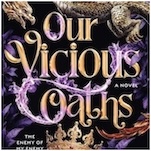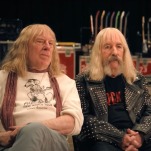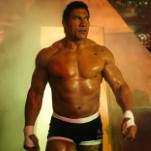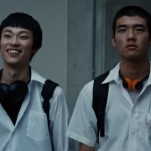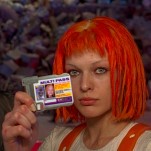The Scrutable West: Industry Bias, Whitewashing and the Invisible Asian in Hollywood
In 2017, Asian actors still haven’t taken center stage in Hollywood
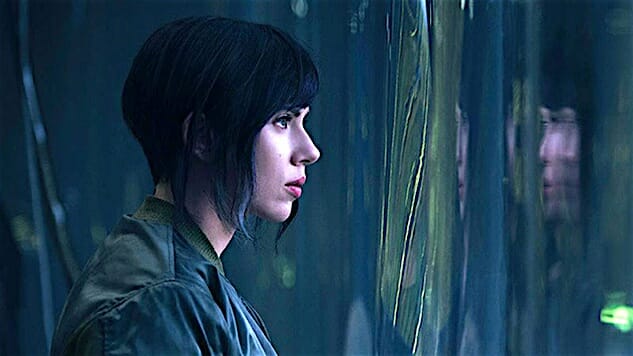
“Never in all the more than 40 years after we made it—not one complaint. Every place I’ve gone in the world people say, ‘God, you were so funny.’ Asians and Chinese come up to me and say, ‘Mickey you were out of this world.’” —Mickey Rooney in a 2008 interview talking about his portrayal of Mr. Yuniyoshi in Breakfast At Tiffany’s
Even after studying to be an English major and embarking on a career in government public relations, I don’t think I’ve ever spun as many excuses as Hollywood directors and actors when it comes to dancing around why they can’t just cast an Asian person in a role. Race-blind casting that wipes out formerly Asian characters. A blockbuster that demands an actor with sufficient star power, which axiomatically means nobody descended from the cultures on the planet’s most populous continent. A fear of making a stereotypical character—because, I mean, how can you write an Asian who isn’t a stereotype, right?
The past couple of years have brought us several object lessons in the above, and every other iteration of Hollywood’s baffling tendency to quietly fight tooth and nail not to have an Asian actor on screen. As someone of just enough Asian descent that you need to be at least Midwestern levels of racist to see it in me without me first informing you, I can’t help but notice the total lack of representation. Neither could the U.S. Commission on Civil Rights when it issued its report “Window Dressing on the Set: Women and Minorities in Television.” It issued that report in 1977. Forty years ago. In the intervening period, it’s barely gotten any better.
The Year of the Invisible Asian (not the Fun, Ninja Kind)
“Well, it’s not actually an Asian character—that’s what I need to tell you about it. I wasn’t asked to play an Asian character, you can be very well assured of that.” —Tilda Swinton, regarding her character (originally a Tibetan man) inDoctor Strange
There was so much legitimate whitewashing going on this past year that some people tripped over the definition of it. Matt Damon in The Great Wall? Not whitewashing. Whitewashing is taking a character who, by every interpretation of the script, ought to be portrayed by a person of color and instead casting a Caucasian person. (Meaning that Ben Affleck, who both directed and starred in Argo (2012), was quite guilty of it, as he, a Caucasian man, portrayed real-life CIA operative Tony Mendez, a Latino man.) Damon’s character, by contrast, is explicitly intended by the script to be of European origin. If the script is guilty of anything, it might of reliance on the white savior or “Mighty Whitey” cliché, in which one white person with a can-do attitude and a training montage proves more competent than, say, an entire indigenouspopulationoftrainedwarriors. Since several other principle characters in The Great Wall are Chinese, whether Matt Damon is a truly egregious white savior is a debate better saved for later (or maybe never, since most people don’t seem inclined to watch the film).
Nor was it whitewashing, really, to cast Finn Jones as the eponymous character in Marvel’s Netflix show Iron Fist, since the character originally is a white person. Some fan outcry demanded the character be cast with an Asian actor, arguing it would have subverted the very same white savior trope that last year’s Doctor Strange similarly found itself dogged by. And speaking of Marvel’s chief mystic—with the casting of white Scottish actress Tilda Swinton in the role of the Ancient One in that film, Marvel Studios seems more or less to have treated the gender flip of the character as an absolution of any whitewashing, which is unfortunate, since almost nobody would’ve complained if they’d cast an Asian actress. (I nominate Michelle Yeoh, who can fluently speak English, has been dispensing wisdom and Wing Chun to insolent fools since the ’90s, and would’ve pretty much guaranteed Doctor Strange a box office breaking opening weekend in her native China.) Instead, we are left with a story in which a white woman is schooling a white man in Wisdom from the East while all the other people who are actually from the East have next to nothing to do with it.
Was Marvel too terrified to play that hoary old trope straight? The story of a washed-up white dude getting his groove back with Asian mumbo-jumbo and then proving to be better at it than his teachers is admittedly some regressive-as-hell ground to be treading on in a 2016 film. But the subtext is all still there, and the final product we got didn’t bother to even include more than one comic relief Asian character.
But They Don’t Look Asian…
“I think this character is living a very unique experience in that she is a human brain in an entirely machine body. She’s essentially identity-less. I would never attempt to play a person of a different race, obviously.” —Scarlett Johansson, talking about Ghost in the Shell
The controversy surrounding Johansson’s casting in Ghost in the Shell opens up a whole other broad subcategory of Asian invisibility, which is in anime-to-film adaptations. There have been several Hollywood adaptations in recent years, including Dragonball Evolution (2009), Speed Racer (2008), and, if you’re willing to let it claim status as an anime for its art style even though it was written by Americans, the Nickelodeon property The Last Airbender (2010).
This is not something merely imposed on Asian characters by white producers, either. For some Asian creators, there is a disconnect.
“Anime is based on ambiguous facial features,” said M. Night Shyamalan, who is of Indian descent and was the director of Airbender, when cornered by reporters on the casting choices. “It’s part of the art form. You got a problem with that? Talk to the dudes who invented anime. It’s not my issue, okay?”
It is as baffling to consider a movie about Dragonball’s Son Goku played by a white actor as it is to consider a Captain America played by a British citizen who votes Tory. It defies common sense and good taste to cast a white woman as a character whose name is a sword that is one of the three Imperial treasures of Japan. It is just weird to look at the Pantone on Katara and Sokka in the TV show, as well as their Inuit-inspired clothing, and conclude that they should code as Caucasian. Yet, even though the tiresome opinion that anime characters “look white” has been pretty eloquently debunked, even Shyamalan seems not to want to cast actors from the ethnicities that gave us this action-packed cartoon aesthetic.
Why is this so important if we are, after all, just talking about some adventure stories?
“Inclusion—in a respectful and humane way—is important,” says Dr. Darnell Hunt, chair of the Sociology Department at the University of California Los Angeles. “It’s not sufficient to have characters of color. They need to have drama, to have a life, to have a character arc, to be shown in their whole humanity and their flaws and their promise. That’s what we see in fully fleshed out characters.”
Hunt has been the lead author of an annual study by UCLA’s Bunche Center for African American Studies since 2014. With funding from the university and from some Hollywood studios, it examines diversity in film and television. Taking a close, cold, hard look at representation of characters in the films of two years prior, the annual study has found one thing in its short time comparing the statistics.
“There are a number of factors that collectively explain why we are where we are,” Hunt says. “The biggest thing to keep in mind is that there hasn’t been a lot of change at all behind the scenes. There’s been glacial change, if any at all. I think what the industry has been grappling with the last few years is that diversity does sell and how we’re going to get there.”
Representation for minorities and women, the Bunche Center study has repeatedly found, has been pretty much garbage for every year the study has examined, both in front of the camera and in the director’s chair, writers’ rooms and executive suites that run the entertainment industry. Compared with the previous years, 2015 showed utter stagnation for minority actors in lead roles, where they were underrepresented by a factor of 3 to 1, accounting for population share.
There was, however, a somewhat dubious bright spot for Asians in the industry in particular: They made up a better share of writers than other minorities (though that was still very low).
“One of the things we’ve noticed is that Asian-American writers are doing well relative to other minorities,” Hunt says. “When it comes to acting in front of the camera as leads, they do very poorly.”
“Inexpressive”
“I had two Asians on a writing staff, and a network executive asked if I had an Asian fetish.” —Glen Mazzara, showrunner for The Walking Dead
Some actors have come out and mentioned this might be in part a function of Asian families not regarding acting as something they want to encourage their children to enter. As he accepted the Emmy for writing an episode of Master of None, Alan Yang told Asian parents to “just do me a favor and just a couple of you get your kids cameras instead of violins.” If anything, the numbers indicate that while more Asian parents defying the stereotypical Tiger Mom approach might do something, that’s not really the whole story.
Nancy Wang Yuen points out in Reel Inequality: Hollywood Actors and Racism, that actors of color generally have fewer acting opportunities, all as a result of the homogeneity of the directors’ chairs and writers’ rooms of Hollywood. Her study found that 77 percent of casting calls specify a white actor. Her book is filled with other firsthand accounts from anonymous Hollywood sources that seem to reinforce the sad truth that a mostly white industry is going to advance the interest of mostly white actors. In one interview, a Latina actor told Yuen that a casting director friend asked for her opinion on a Latino casting decision, since the director only knew “maids and gardeners” who were Latino.
“I work with a lot of different people, and Asians are a challenge to cast because most casting directors feel as though they’re not very expressive,” one other casting director told Yuen. “They’re very shut down in their emotions … If it’s a look thing for business where they come in they’re at a computer or if they’re like a scientist or something like that, they’ll do that; but if it’s something were they really have to act and get some kind of performance out of, it’s a challenge.”
I’m at a loss.
“Risky” Business?
“I can’t mount a film of this budget, where I have to rely on tax rebates in Spain, and say that my lead actor is Mohammad so-and-so from such-and-such. I’m just not going to get it financed. So the question doesn’t even come up.” —Ridley Scott, in a Nov. 25, 2014, interview with Variety about Exodus: Gods and Kings
The bankability excuse doesn’t hold water, either, says Adam Moore, National Director of Equal Employment Opportunity at actors’ union SAG-AFTRA.
“One of the first things people think about is the risk-reward calculation,” he says. “There are things that, true or not, are these established wisdoms on what will hedge your bets: Name talent—famous people who prove they can sell tickets—tends to be one of those established wisdoms.”
Yet, he adds, “Just because you have three Oscar winners doesn’t mean you’ll make any money, man or woman, white or not—it doesn’t actually work that way. Like in a lot of businesses, there are people who are risk-averse and see someone of color, or someone older, as in and of itself somehow a risk when they’re making a calculation on what to make.”
This might remind any millennial of the great paradox of building credit: To accumulate star power, one must apparently already have it. It might be the reason the last and only acting Oscar to go to an Asian actor—Miyoshi Umeki, who won Best Supporting Actress for her role in Sayonara—was handed out in 1957, which was, yes, sixty years ago.
Ultimately, Hunt said, it’s false wisdom on the part of Hollywood gatekeepers, considering all the anime adaptations I listed above flopped hard and films like the past two Star Wars entries or the horror film Get Out, which prominently featured women and people of color as lead actors, all conquered the box office.
“We’ve had these breakout films that nobody expected to make so much money like Hidden Figures and Get Out, low-budget films that became phenomena,” Hunt says. “These aren’t the types of films that would typically get greenlighted. The question is how many of these successes do we need before you realize the way we do business doesn’t work? We’re finding that white households like shows that look more like America than those that didn’t.”
Unfortunately, Hunt says, the way the industry is structured resists a change in the people who make hiring decisions, considering the vast majority of executives, directors and producers are white.
“Look who’s in the executive suite,” Hunt says. “You would have to invite into the room people who aren’t part of their social network to help them make decisions, which would mean sharing power. When you’re in these positions, you benefit handsomely. Giving that up is not unilaterally in your best interest. I think people realize that diversity is a good thing, but how do you get there the way the industry is structured?”
Hope in the Age of Amazon and Netflix?
Moore and Hunt both agree that the explosion of television production and the increased avenues available to a creative storyteller trying to get his or her work in front of eyeballs has led to at least some gains for actors and directors of color.
“Just a few years ago, we wouldn’t be able to talk about Amazon studios or Netflix feature films and streaming series because those things didn’t exist,” Moore says. “The ability of people to get those stories made and told and get them to audiences has changed dramatically over the past decade.”
“We’ve seen in television a noticeable uptick [in diversity], and I think that’s because there’s been an explosion of production,” Hunt says.
There’s also an understanding in the industry that it might need to diversify or die, considering the demographic reality in the United States, Hunt adds. The most recent studies Hunt cite showed that minority moviegoers buy more than half of all movie theater tickets in the United States.
Here, ultimately, is my concern as the grandson of a Chinese immigrant, having lived out a good stretch of my time in Middle America, where I have encountered some pretty putrid racism in my immediate vicinity: Does this invisibility dehumanize an entire hemisphere? Does it close our collective cultural mind off to the broader spectrum of what it is to live on this planet? I’ve encountered people who could not believe my Chinese grandfather married a Cuban schoolteacher and ended up here in the United States, despite the fact tons of Chinese people have immigrated to the United States and must therefore probably emigrate from China to many other places. It doesn’t compute to them, and this is very worrisome because it means they lack the imagination to understand where somebody is coming from emotionally when they are, say, fleeing a war-torn nation, or a regime that literally wants to kill them.
“We do the study we do because we’re trying to influence discourse in the industry,” Hunt says. “The most compelling argument is the bottom line argument, but as a sociologist I’m interested in the impact of this on society. We know that when images are circulated, they normalize reality. That’s why inclusion is important.”
Maybe it’s getting through to people. As we recently reported, Caucasian actor Ed Skrein’s decision to step aside as the character of Japanese-American Ben Daimio and publicly point to whitewashing as his reason, has turned some heads among Hollywood casting agents.
— Ed Skrein (@edskrein) August 28, 2017
My grandfather started by sweeping floors and running a forklift in a factory in Chicago before they promoted him to a union gig as a dye setter. He was fluent in English and Spanish and the Taishanese dialect by the time he was my age. His first Thanksgiving in Chicago, his wife clipped recipes for a turkey dinner out of the newspaper because that’s what you cook in America. The only one of his adult grandchildren who couldn’t make it to his deathbed was my brother, who was in Afghanistan with the Marines at the time.
You’ll see families like ours on TV plenty—they just won’t look like us or have anything useful to say about immigration policy. You’ll also see a white kid do a funny Chinese voice while pulling at the corners of his eyes if you get him drunk enough, or a dating profile with “no Asians” on it, or political ads that feature leering Chinese people coming to take your jobs. Do you think all that might be related?
Kenneth Lowe is a media relations coordinator for state government in Illinois. His work has appeared in Colombia Reports, Illinois Issues magazine, and the St. Louis Post-Dispatch.


















